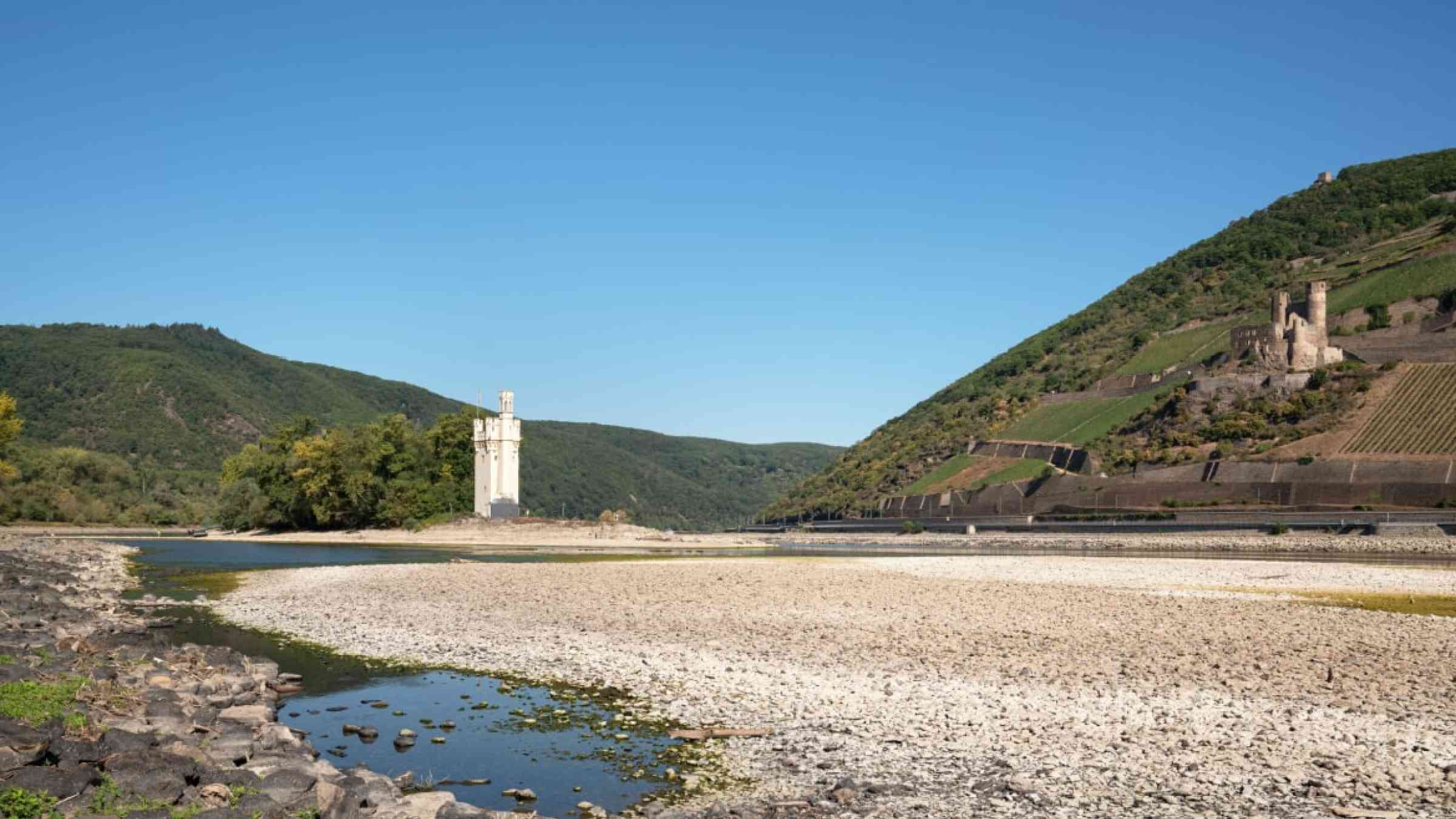High temperatures exacerbated by climate change made 2022 Northern Hemisphere droughts more likely

Western Central Europe, North America, China, and other parts of the Northern Hemisphere faced water shortages, extreme heat, and soil moisture drought conditions throughout the summer of 2022
Water shortages, extensive fires, high food prices and severe crop losses were among the most important impacts of one of the hottest European summers on record, with heat waves and exceptionally low rainfall across the Northern Hemisphere. These conditions led to very dry soils particularly in France, Germany and other central European countries (called West-Central Europe in the following); mainland China also experienced exceptionally high temperatures and dryness. These deficits in soil moisture led to poor harvests in the affected regions, increased fire risk, and, in combination with already very high food prices, is expected to threaten food security across the world.
Scientists from Switzerland, India, the Netherlands, France, the United States of America and the United Kingdom, collaborated to assess to what extent human-induced climate change altered the likelihood and intensity of the low soil moisture, both at the surface and the root zones for most crops.
Main findings
- Heat and low rainfall in West-Central Europe had far reaching impacts on a variety of sectors including human health, energy, agriculture, and municipal water supply. It was exacerbated by e.g. poor water infrastructure and leakages, and it came at a time when food and energy prices were already high resulting in compounding social and economic impacts.
- In this study, we particularly focus on the dry soils which caused severe economic and ecological impacts across the Northern Hemisphere (excluding the tropical regions) and were particularly severe in West-Central Europe. We therefore focus on these two regions, North-Hemisphere extratropics and West-Central Europe, to analyse the agricultural and ecological drought from June to August 2022.
- Observation-driven land surface models show that very low summer surface and root-zone soil moisture, such as observed in 2022, happens about once in 20 years in today’s climate in both regions.
- While the magnitude of historical trends vary between different observation-based soil moisture products, all agree that the dry conditions observed in 2022 over both regions would have been less likely to occur at the beginning of the 20th century.
- To determine the role of climate change in these observed changes, we combine the observation-based datasets with climate models and conclude that human-induced climate change increased the likelihood of the observed soil moisture drought events. The change in likelihood is larger in the observation-based data compared to the models.
- We also assessed the role of climate change in temperature and rainfall in these regions and found that the strong increase in high temperatures is the main reason for the increased drought.
- Combining all lines of evidence we find for West-Central Europe that human-induced climate change made the 2022 root zone soil moisture drought about 3-4 times more likely, and the surface soil moisture drought about 5-6 times more likely.
- For the Northern Hemisphere extratropics, human-induced climate change made the observed soil moisture drought much more likely, by a factor of at least 20 for the root zone soil moisture and at least 5 for the surface soil moisture, but as is usually the case with hard to observe quantities, the exact numbers are uncertain.
- The models analysed also show that soil moisture drought will continue to increase with additional global warming, which is consistent with projected long-term trends in climate models as reported e.g., in the IPCC AR6.